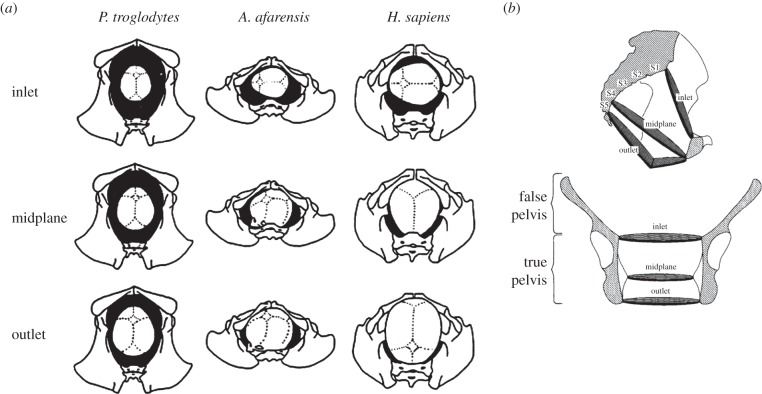Figure 2.
(a) ‘Midwife's' (inferior or lithotomy position) view of the birth canal in a chimpanzee (P. troglodytes), A. afarensis (A.L. 288–1, ‘Lucy’) and a modern human female. The position of the infant's head at the three major planes of the birth canal is shown. Note the non-rotational birth in apes in which the infant's head faces anteriorly throughout, the contrasting non-rotational pattern in the australopithecine in which the infant's head faces laterally throughout, and the rotational pattern in the human in which the infant's head enters the birth canal facing laterally, but then rotates at the midplane and exits the outlet facing posteriorly. Also note that in the two hominins, the infant's head exits the pelvis more anteriorly, under the ischiopubic rami. (b) Midsagittal (above) and coronal (below) sections through a modern human female pelvis, illustrating the three major planes of the birth canal. (a adapted from [24,33]; b from [1]).

